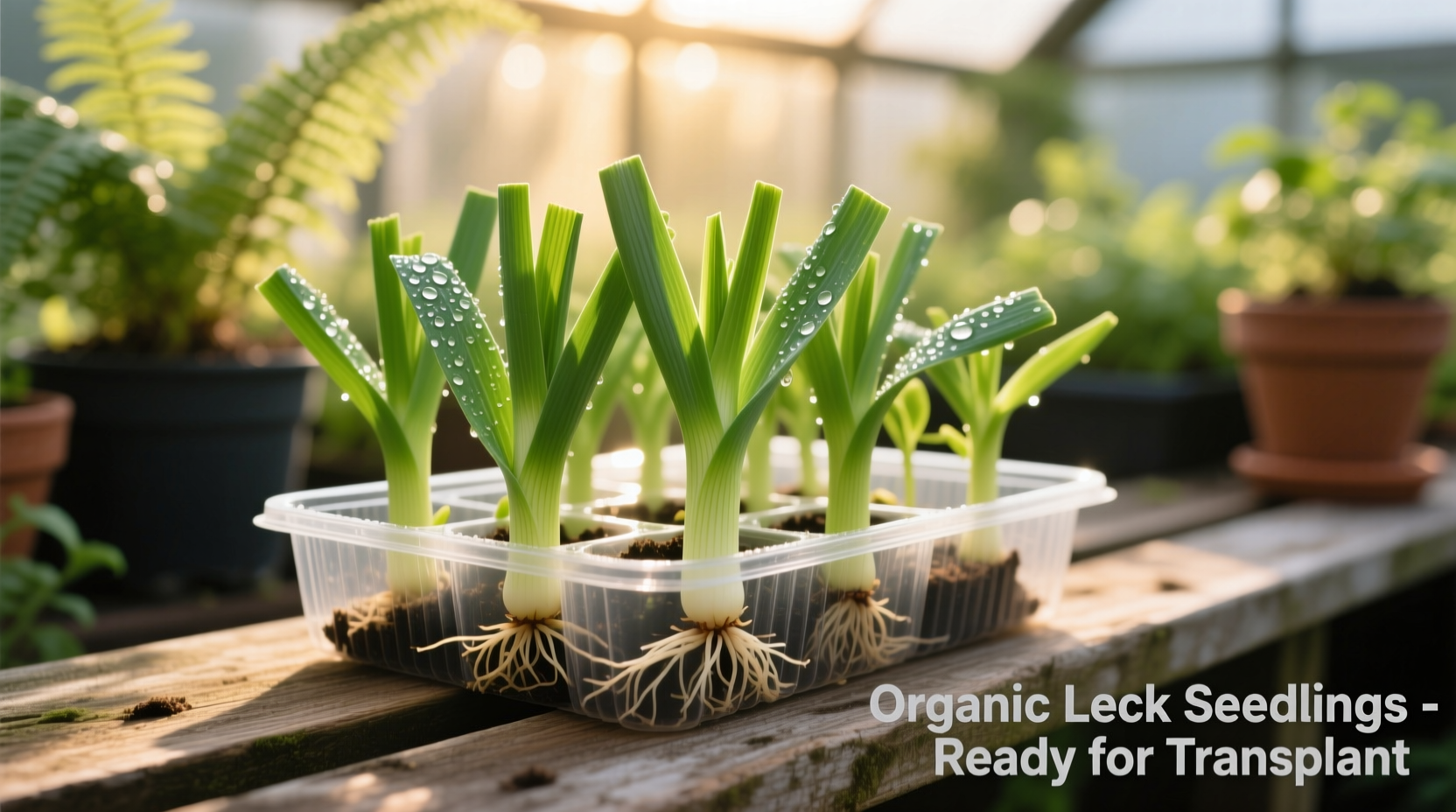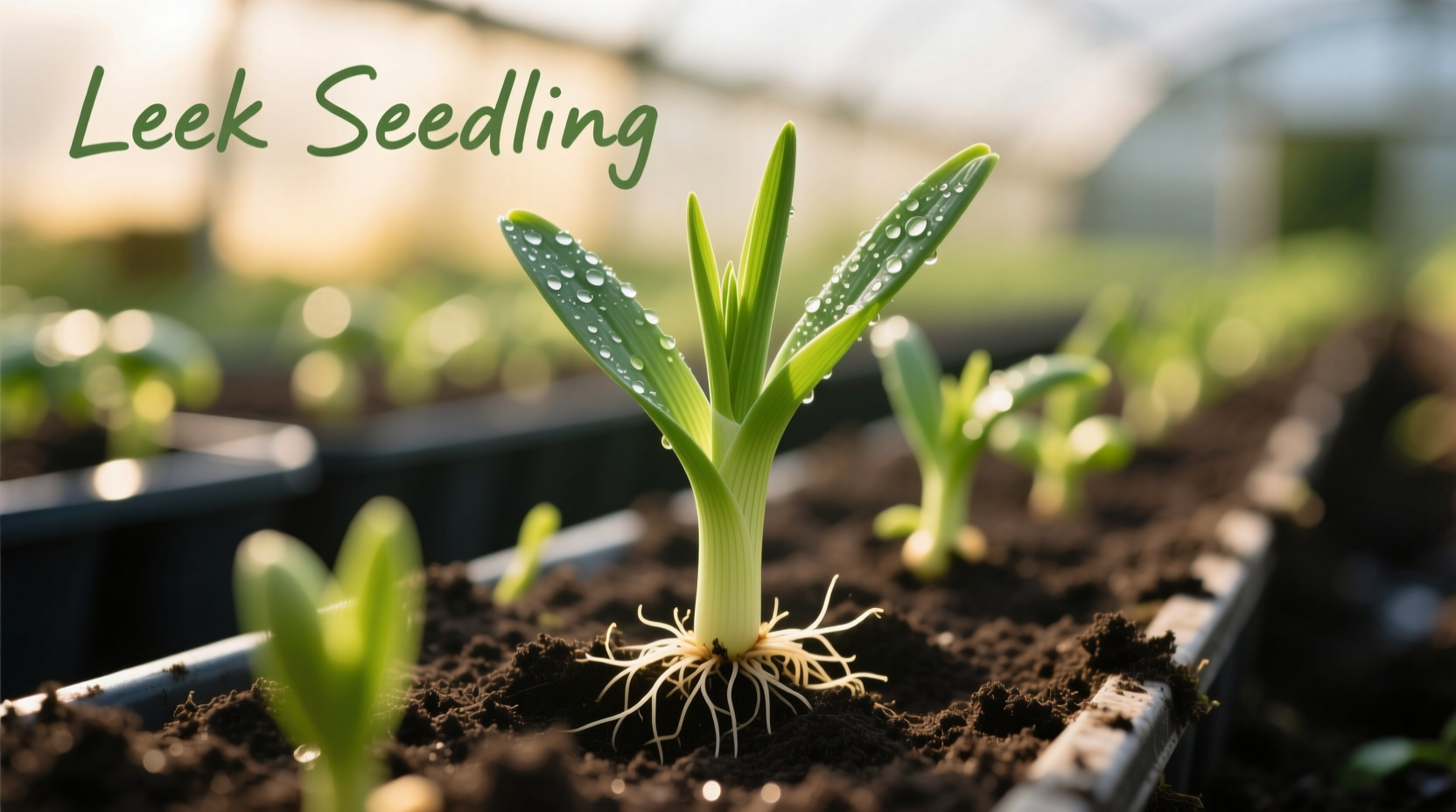Discover exactly how to grow robust leek seedlings with this comprehensive guide. Whether you're a first-time gardener or looking to perfect your technique, you'll learn the precise timing, soil requirements, and care practices that lead to healthy, flavorful leeks. We've distilled decades of horticultural research into actionable steps you can implement immediately in your garden.
Why Leek Seedlings Demand Special Attention
Unlike many vegetables, leeks require an extended growing season that often necessitates starting seeds indoors. According to the University of Minnesota Extension, leeks need 120-150 days to reach maturity, making proper seedling development critical for harvest success in most climates. Their unique growth pattern—where the edible portion forms through successive hilling—sets them apart from other alliums like onions or garlic.

Your Step-by-Step Leek Seedling Timeline
Follow this precise timeline for optimal results, adjusted for your specific climate zone:
| Week | Critical Action | Temperature Range | Moisture Level |
|---|---|---|---|
| 8-10 weeks pre-frost | Start seeds indoors | 65-75°F (18-24°C) | Consistently moist |
| 4-6 weeks post-germination | Begin hardening off | Gradually reduce to 50°F (10°C) | Slightly drier |
| Transplant time | Plant in garden | Soil temp 50°F+ (10°C+) | Deep watering |
| Ongoing | Weekly hilling | N/A | Consistent moisture |
This timeline reflects research from Cornell University's horticultural department, which found that leeks started too early become root-bound while late starts fail to develop proper stem length before cold weather arrives.
Starting Leek Seeds: The Foundation for Success
Begin with these critical steps for strong seedlings:
Soil Preparation for Seed Starting
Create a fine, well-draining mix using equal parts seed starting mix, compost, and perlite. Leek seeds need consistent moisture but will rot in soggy conditions. The Oregon State University Extension recommends maintaining pH between 6.0-7.5 for optimal nutrient availability during early growth stages.
Sowing Technique That Makes a Difference
Plant seeds ¼ inch deep in rows 2 inches apart. Unlike many vegetables, leeks benefit from slightly crowded early growth—their close proximity helps support each other as they develop. Thin to 1 inch apart when first true leaves appear, then again to 2 inches before transplanting.
Transplanting: Avoiding Common Pitfalls
Timing your transplant correctly prevents setbacks that can delay harvest by weeks:
When Your Seedlings Are Ready
Look for these specific indicators before moving seedlings outdoors:
- Stem thickness of at least ¼ inch (pencil lead size)
- Height of 6-8 inches
- At least 3-4 true leaves
- Firm, white roots visible at drainage holes
Transplanting too early exposes delicate seedlings to frost damage, while waiting too long causes root binding that stunts growth. The Royal Horticultural Society notes that properly timed transplants establish 40% faster than those moved outside optimal windows.
Planting Depth and Spacing Strategy
Dig trenches 6 inches deep and 6 inches apart. Place seedlings in the bottom, then gradually fill as plants grow—a technique called "hilling" that creates the prized white stem portion. This method, validated by multiple agricultural studies, produces longer blanched sections than traditional planting.
Troubleshooting Guide: Common Leek Seedling Problems
Identify and solve these frequent issues before they compromise your harvest:
| Symptom | Most Likely Cause | Immediate Action | Prevention Strategy |
|---|---|---|---|
| Yellowing leaves | Nitrogen deficiency | Apply fish emulsion fertilizer | Amend soil with composted manure before planting |
| Thin, weak stems | Insufficient light | Move to brighter location or add grow lights | Provide 14+ hours of light daily during seedling stage |
| Wilting despite moisture | Leek moth larvae | Remove affected plants, apply BT spray | Cover with floating row cover immediately after transplanting |
| Purple discoloration | Phosphorus deficiency or cold stress | Apply bone meal, protect from cold snaps | Test soil pH, ensure proper hardening off process |
Climate-Specific Considerations
Leek seedling requirements vary significantly by region:
- Cold climates (Zones 3-5): Start seeds 10-12 weeks before last frost. Use black plastic mulch to warm soil before transplanting.
- Moderate climates (Zones 6-8): Start seeds 8-10 weeks before last frost. Focus on consistent moisture during summer heat.
- Warm climates (Zones 9-11): Plant in fall for winter harvest. Choose fast-maturing varieties like 'King Richard' that tolerate warmer conditions.
The USDA's Agricultural Research Service notes that leeks grown in regions with less than 150 frost-free days require specific short-season varieties to mature properly—a crucial consideration often overlooked by new gardeners.
Harvesting Your Patience: When and How to Pick Leeks
Harvest begins when stems reach 1 inch in diameter, typically 120-150 days after sowing. Gently loosen soil around plants before pulling to avoid breaking stems. For continuous harvest, select outer plants first, allowing remaining leeks to continue growing.
Store harvested leeks upright in a container with 1 inch of water in the refrigerator for up to two weeks. For longer storage, freeze blanched slices or store in a root cellar at 32-35°F (0-2°C) with 95% humidity.











 浙公网安备
33010002000092号
浙公网安备
33010002000092号 浙B2-20120091-4
浙B2-20120091-4